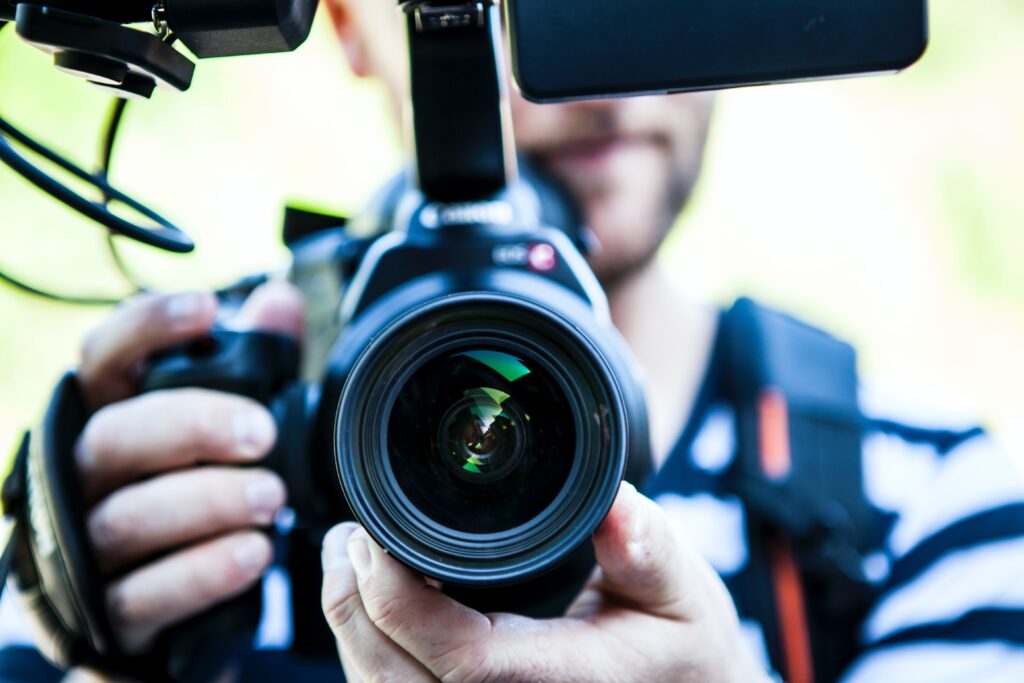Throughout my marketing classes and work as a marketing coordinator, one of the most important skills I’ve learned has been content creation and marketing. This is the content that is created and distributed for the purpose of engaging an audience. For a person to be an effective marketer, content creation allows for drawing attention to what the business offers while also working to engage the current customers. I’m going to break down the steps of the Media Production Process so you can properly plan, create, and distribute video content.
Stage 1 – Development
The first stage of the Media Production Process is development. This is mainly the brainstorming aspect of media production. Figuring out what kind of media is best suited for the campaign, why it should be created, and who should be featured in it. This is best done through collaboration and discussion with a group of people so that various viewpoints are considered and the result is more representative of the brands identity. With this information, then you consider what you want your native platform to be.
Stage 2 – Pre-Production
The next stage is Pre-Production. This includes multiple elements of planning and drawing out what the content will look like. It begins with figuring out what story you’re trying to tell and simplifying it with a logline. Loglines are used to present the core concept of the story and can serve as a guideline in the following steps. Then comes designing the storyboard. When creating video content, a storyboard is the best way to show what each shot will look like so that when it comes time to film, you have something to refer to. Writing a script is also a helpful tool in video content and can help deliver your message more efficiently. Outlining a script can also save editing time, reducing the amount of content that needs to be cut out in post-production. The final step is figuring out who it should feature, what equipment may be needed to produce the content, when the best time to record is, and where do you want to film it. Planning this in advanced can reduce stress and, when it comes time to film, ensure that all preparation has been completed.
Stage 3 – Production
Time to film! This is when the necessary members involved get together and actually produce the content. Ideally, at this point all necessary equipment has been gathered and everyone involved knows exactly what needs to be done. This helps prevent complications and creates for a smoother production process.
Stage 4 – Post-Production
After all the main production is done, it’s time to organize the footage and create your final product. This is where the team adds effects, sounds, music, and titles to the footage to make it look nice. At this point, the editor also cuts out any unnecessary footage and decides whether or not the team needs to reshoot anything.
Stage 5 – Distribution
Now that you have your video, you need to figure out where it’s going to go. This is where you’d consider your goals for the product and determine what the best platform is for you to reach that goal. Next, you’re going to want to write a description for the video, something that will grab your audiences attention. Once you’ve figured all that out, you’re ready to post!
Stage 6 – Promotion
You’re probably thinking, “Now that it’s posted, I’m done right?” Almost! Now you want to promote your product. Figure out which one of your platforms gains the most traffic or has the most interactions and promote your video through those sites. Depending on the platform you choose, you have the option to make a trailer or compilation for your video or a flyer with some of the information your video talks about.
Following the steps of the media production package is a great way to create engaging content in the most efficient way. If you’d like to see an example of some of the elements of pre-production and the resulting video, click the link below:

